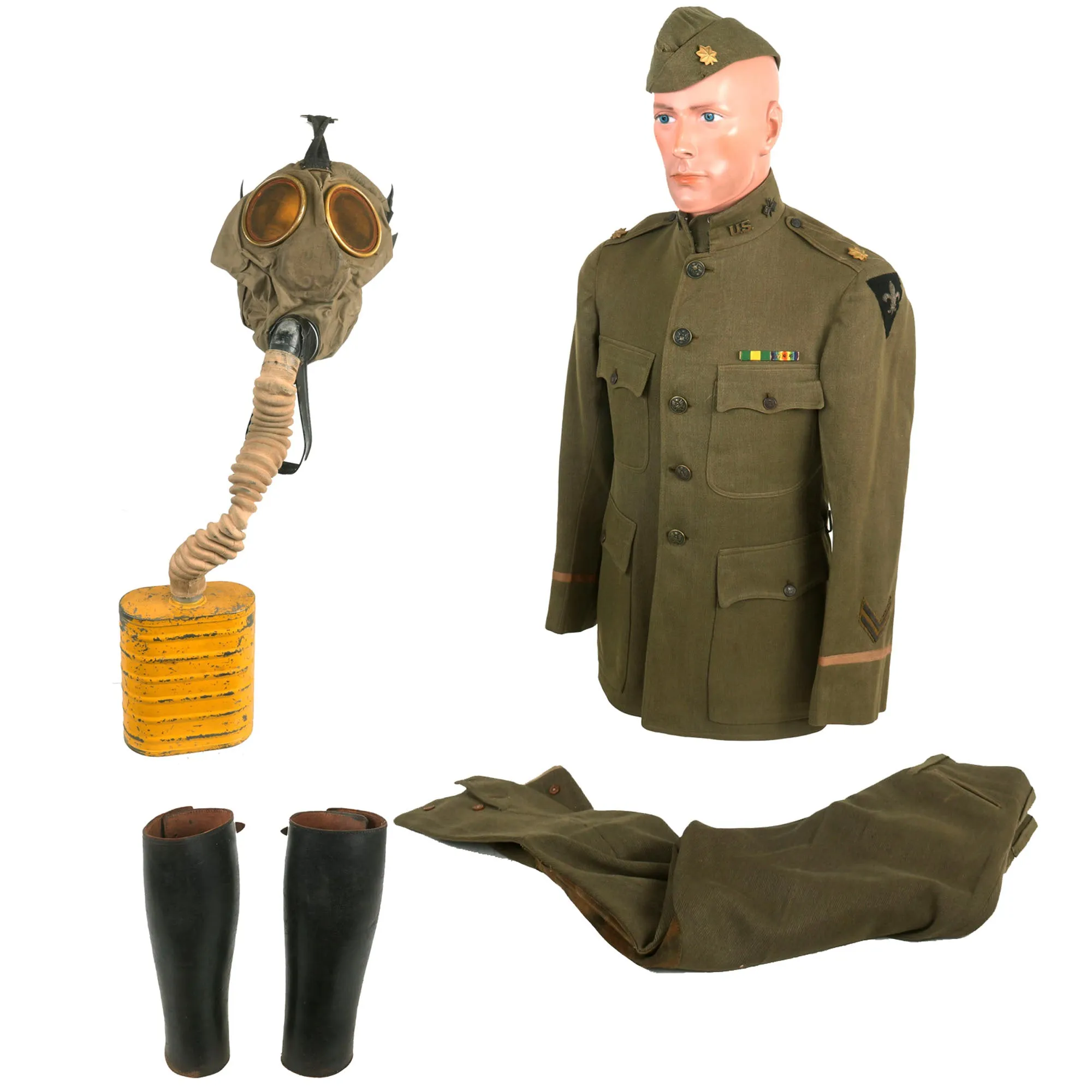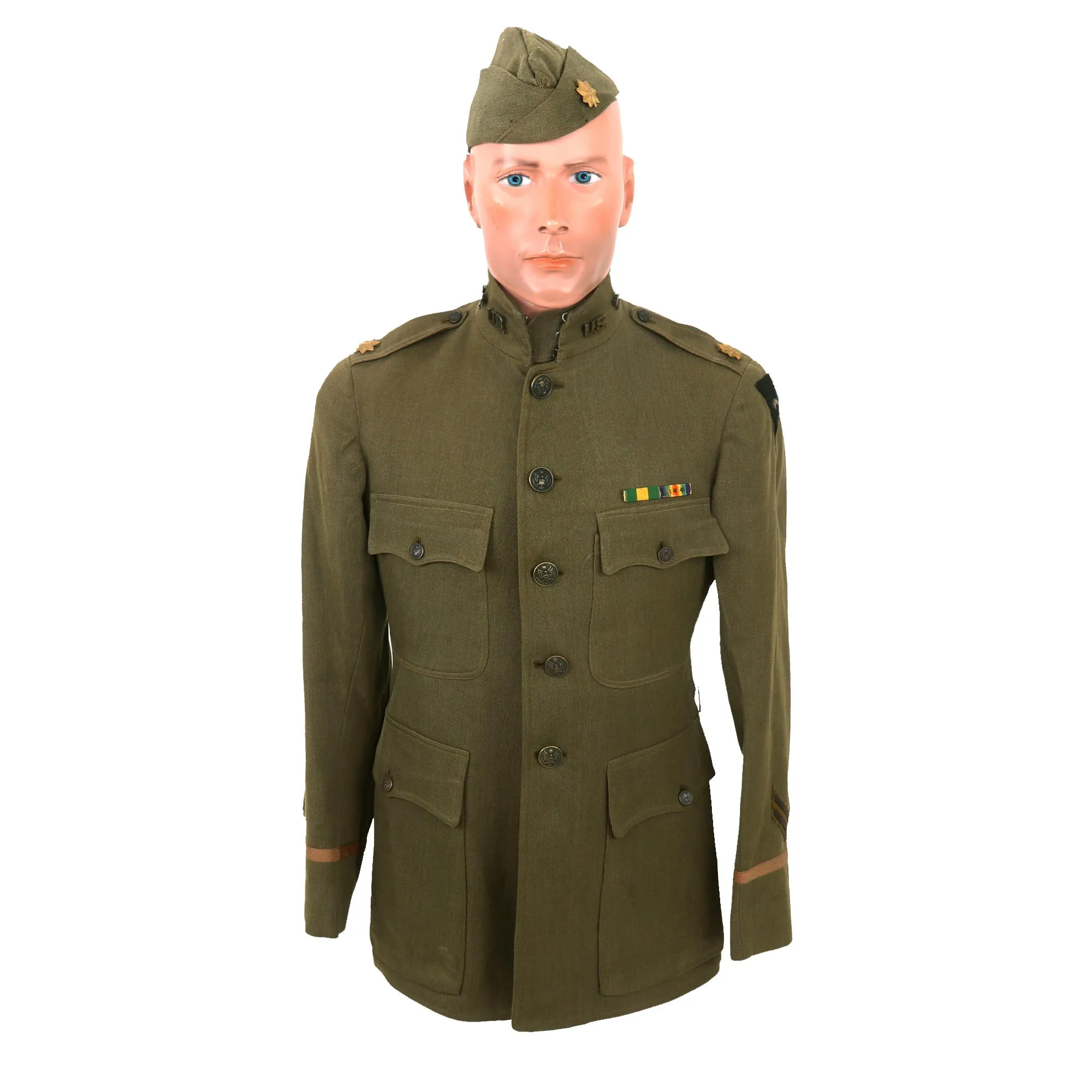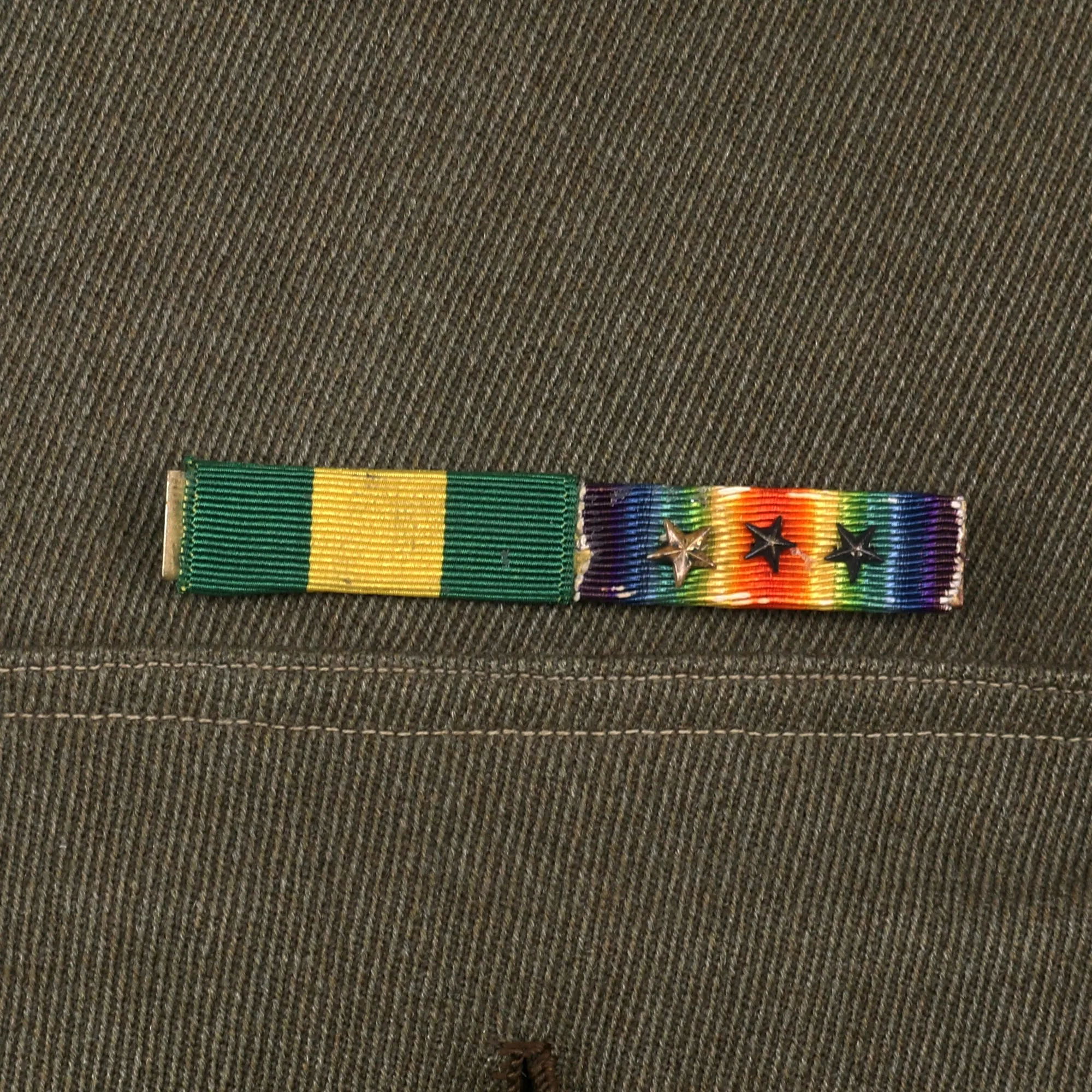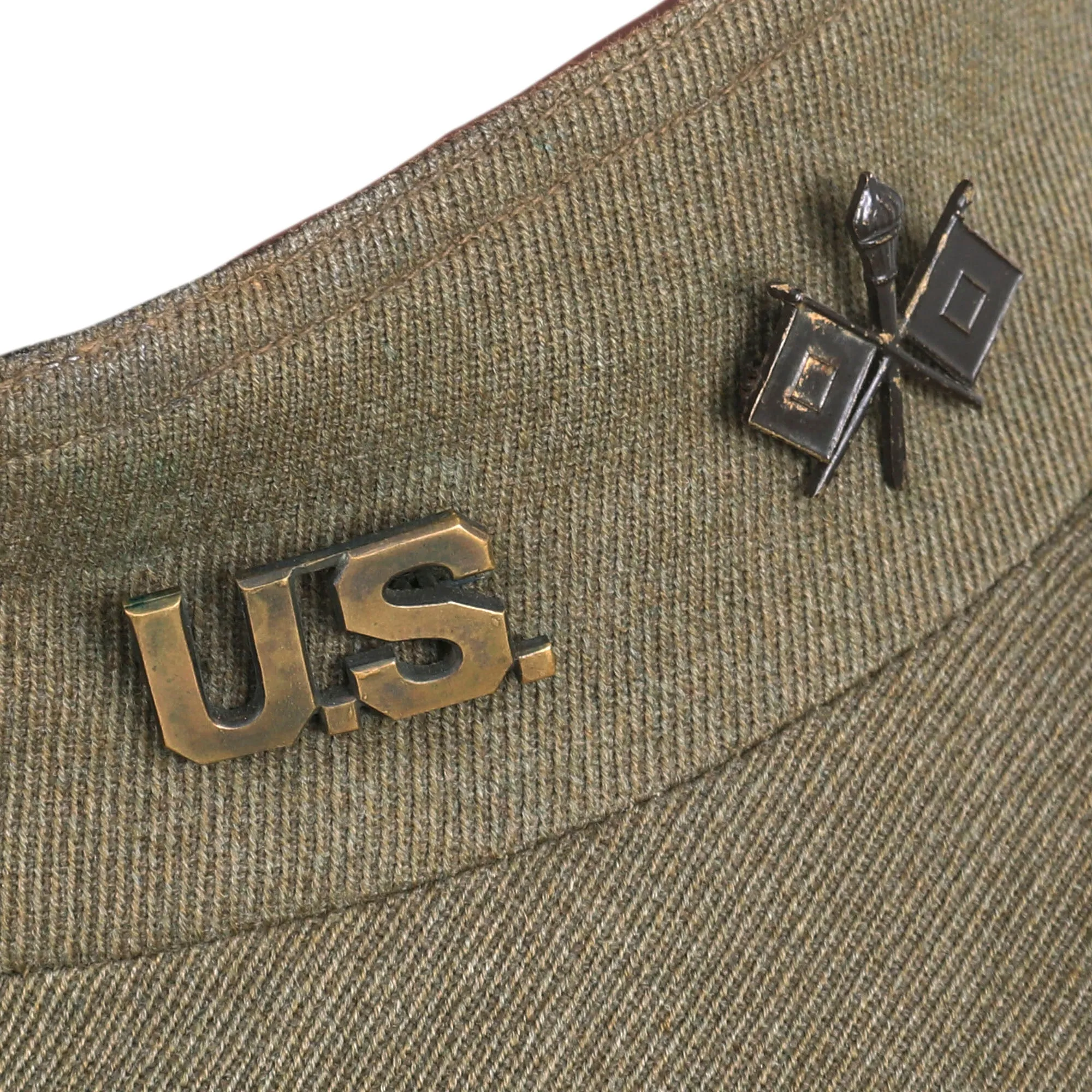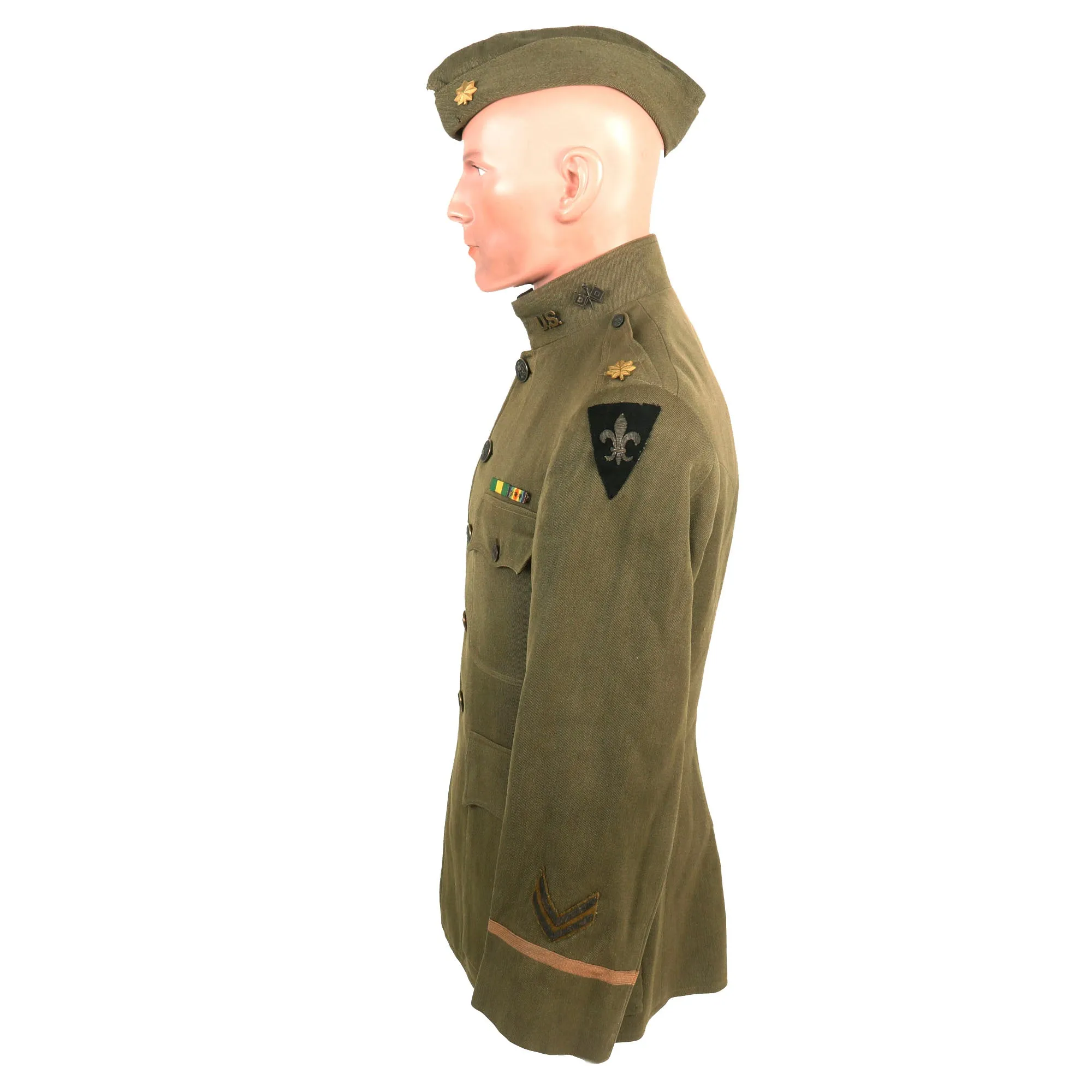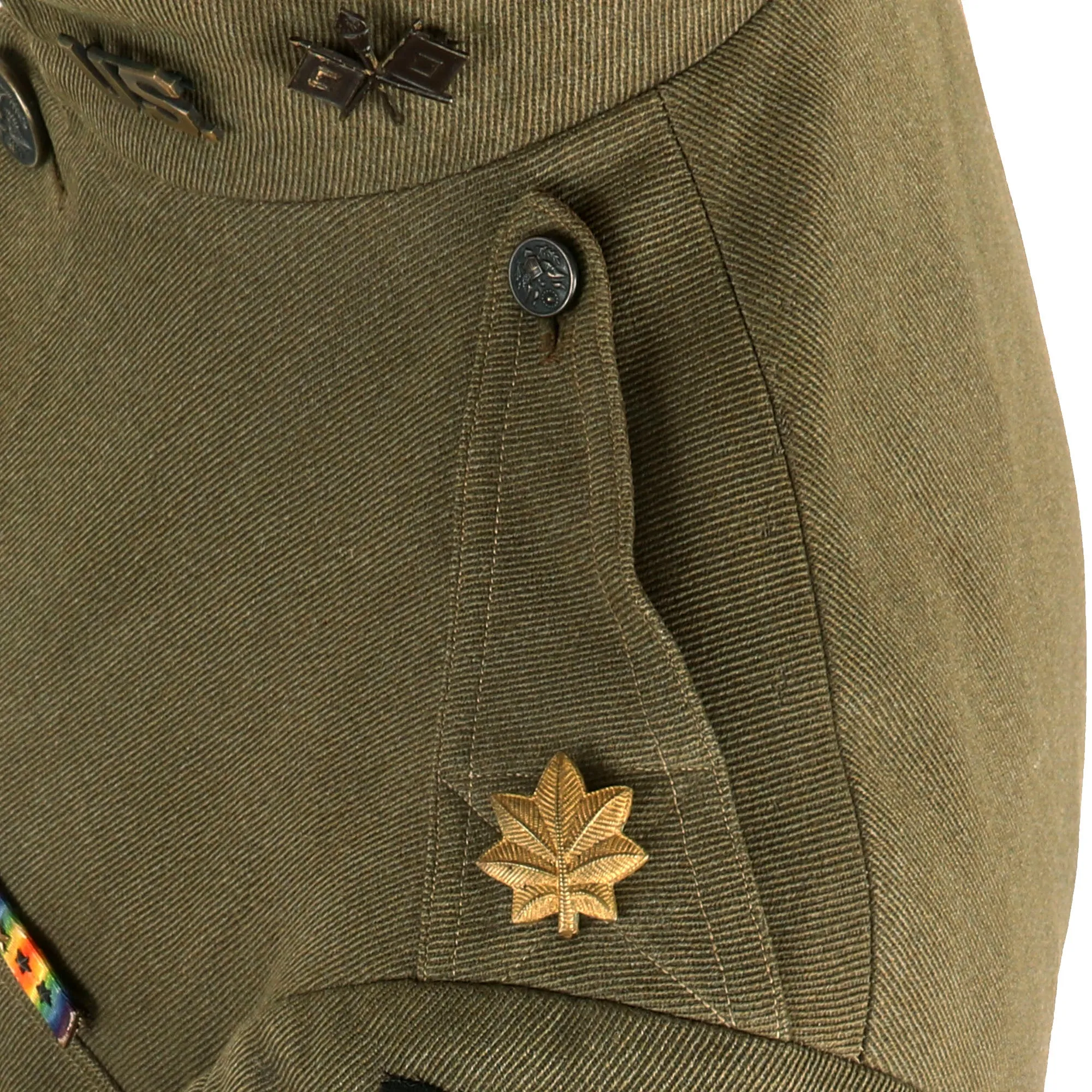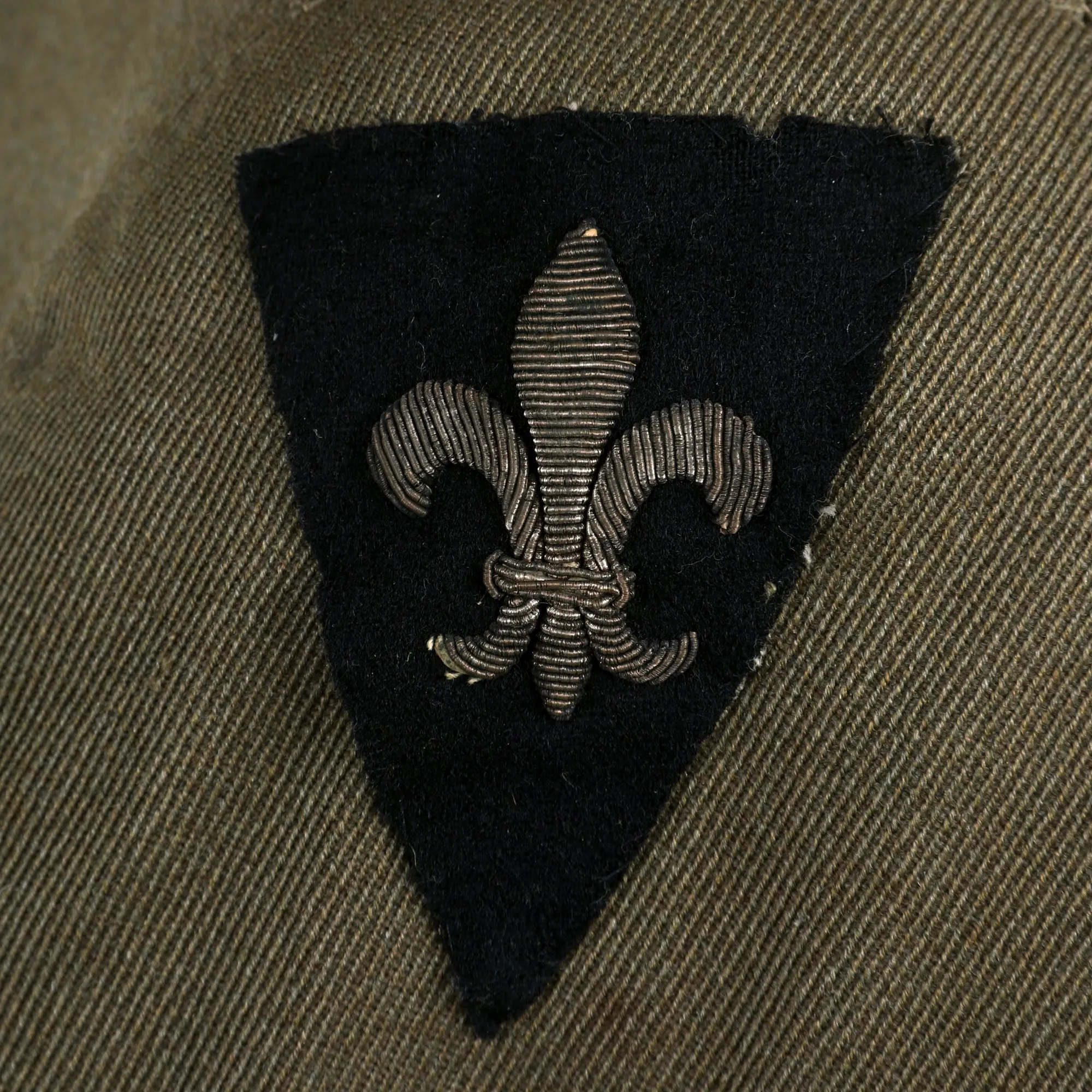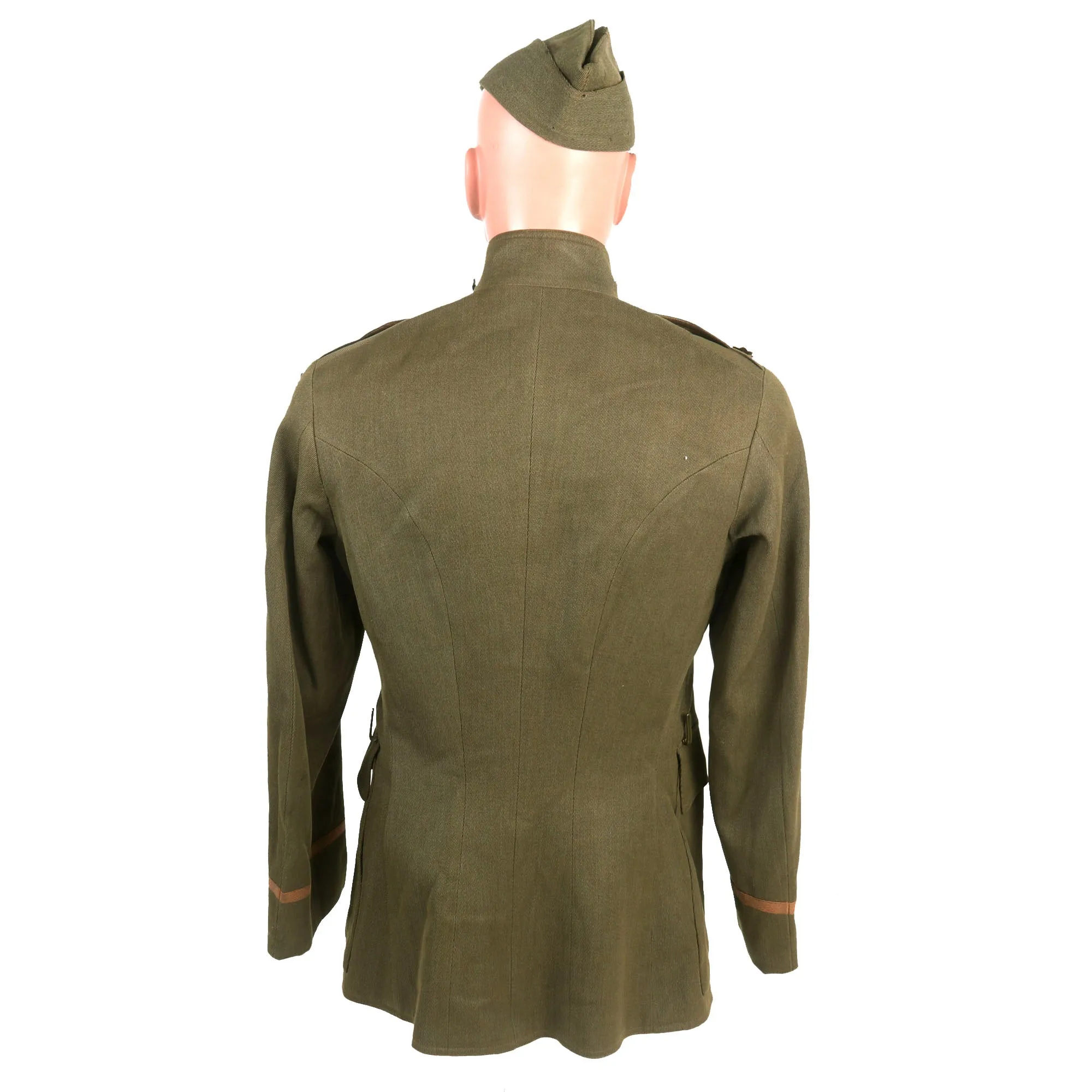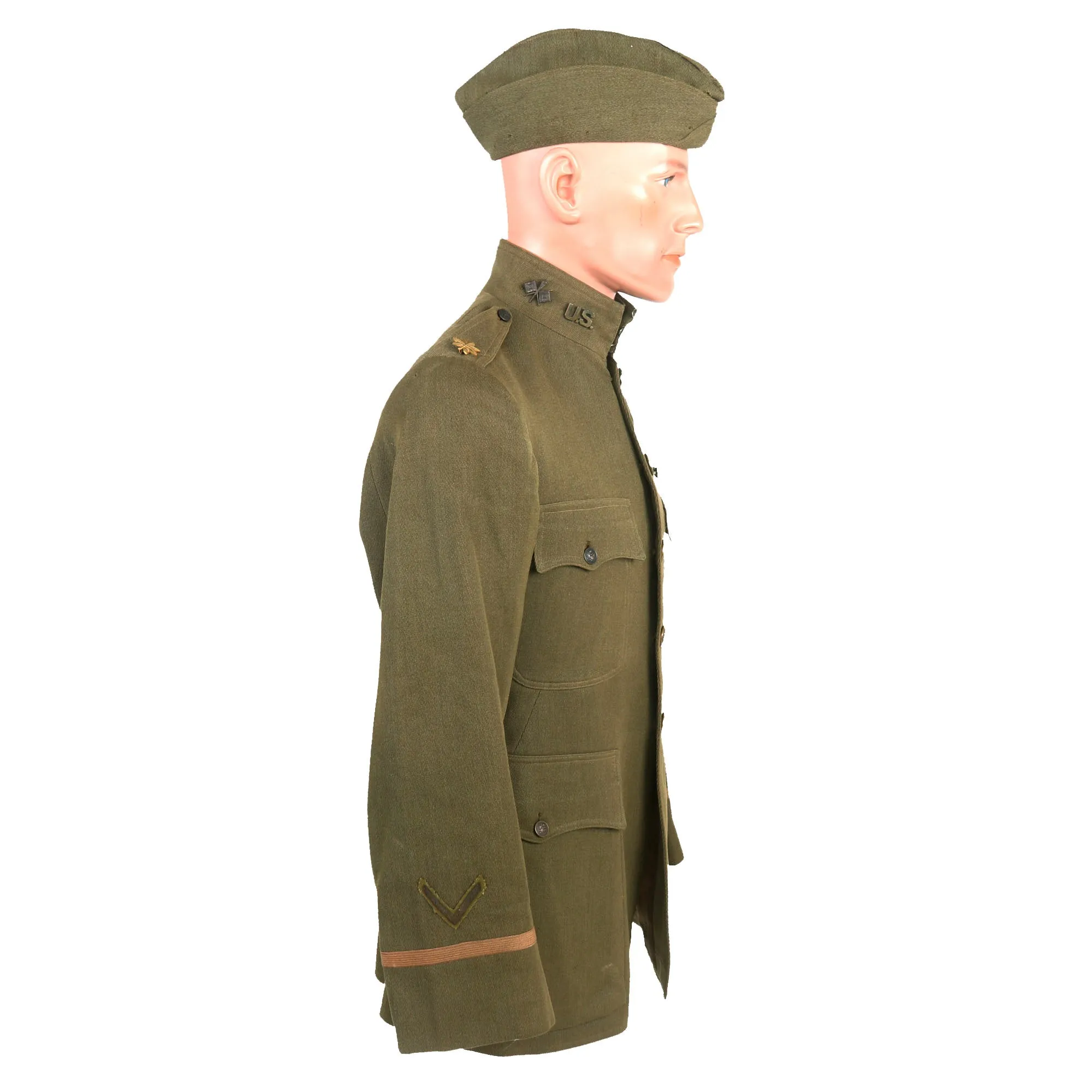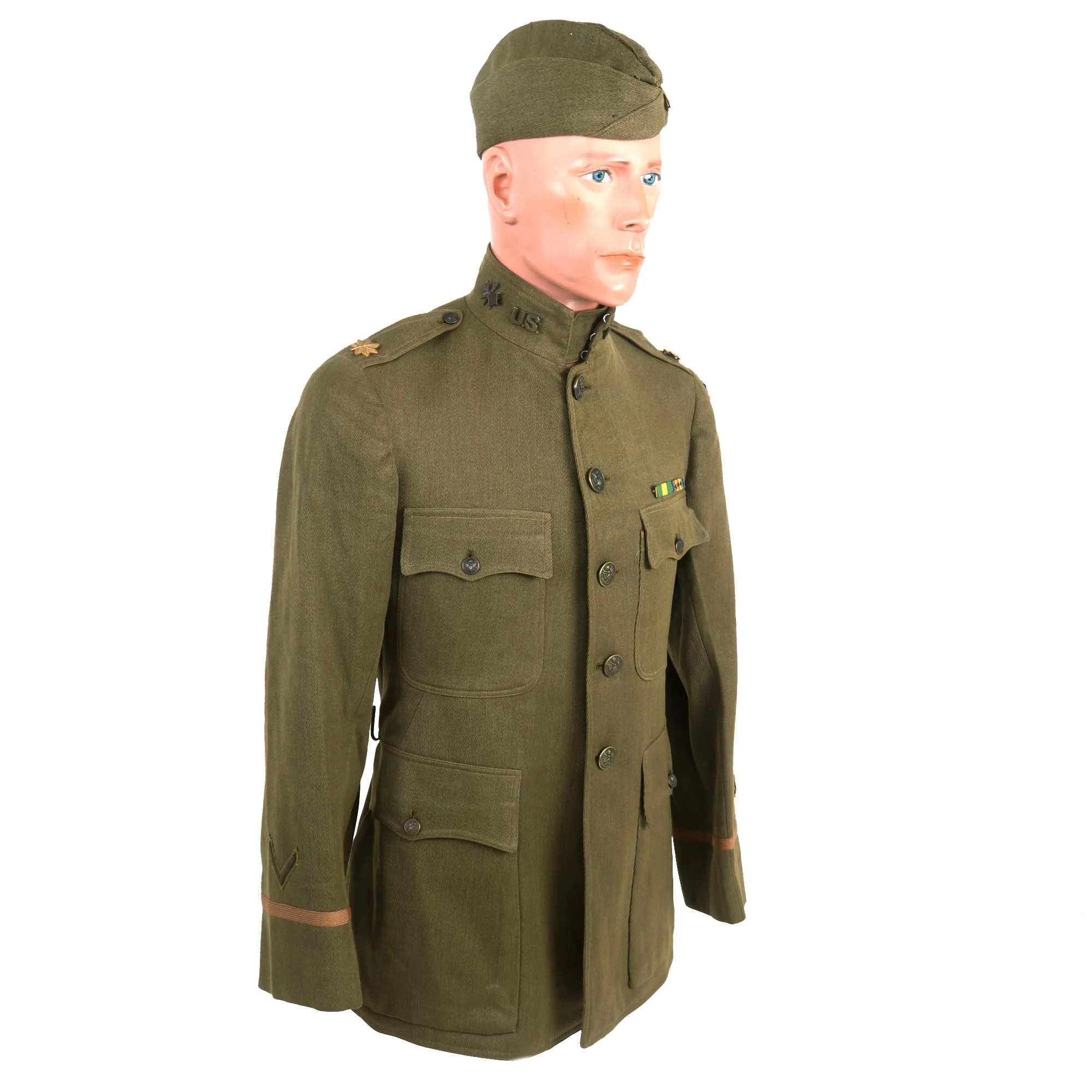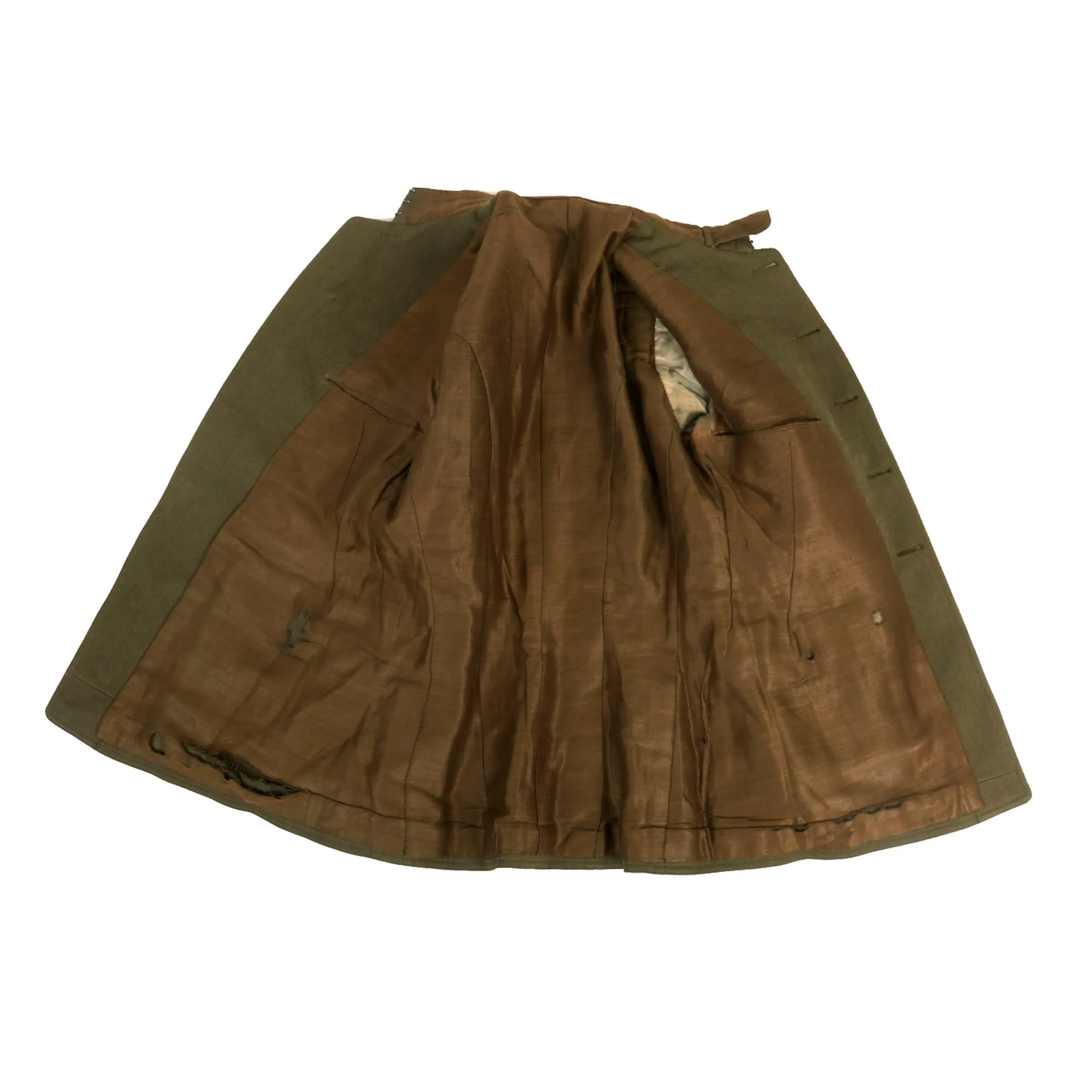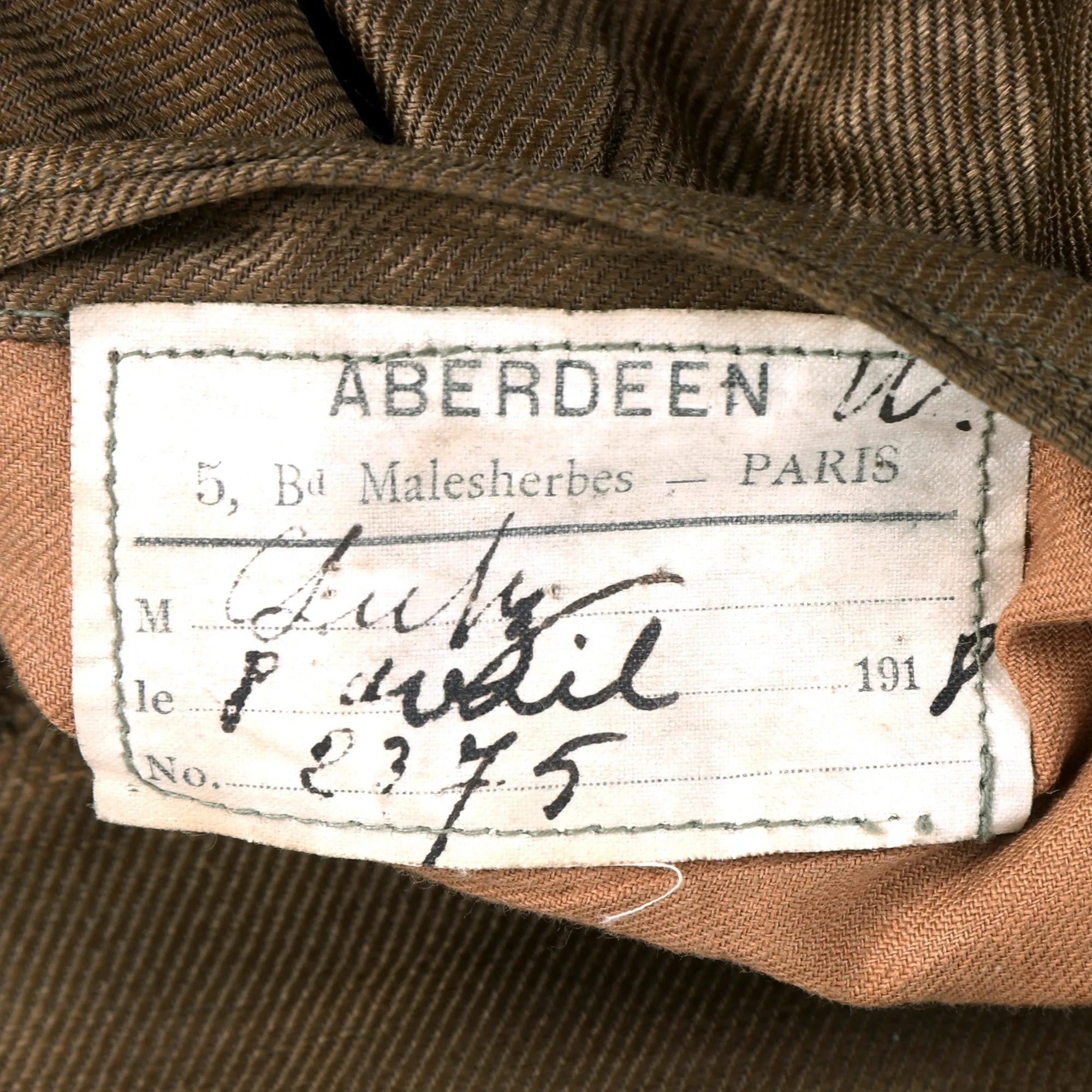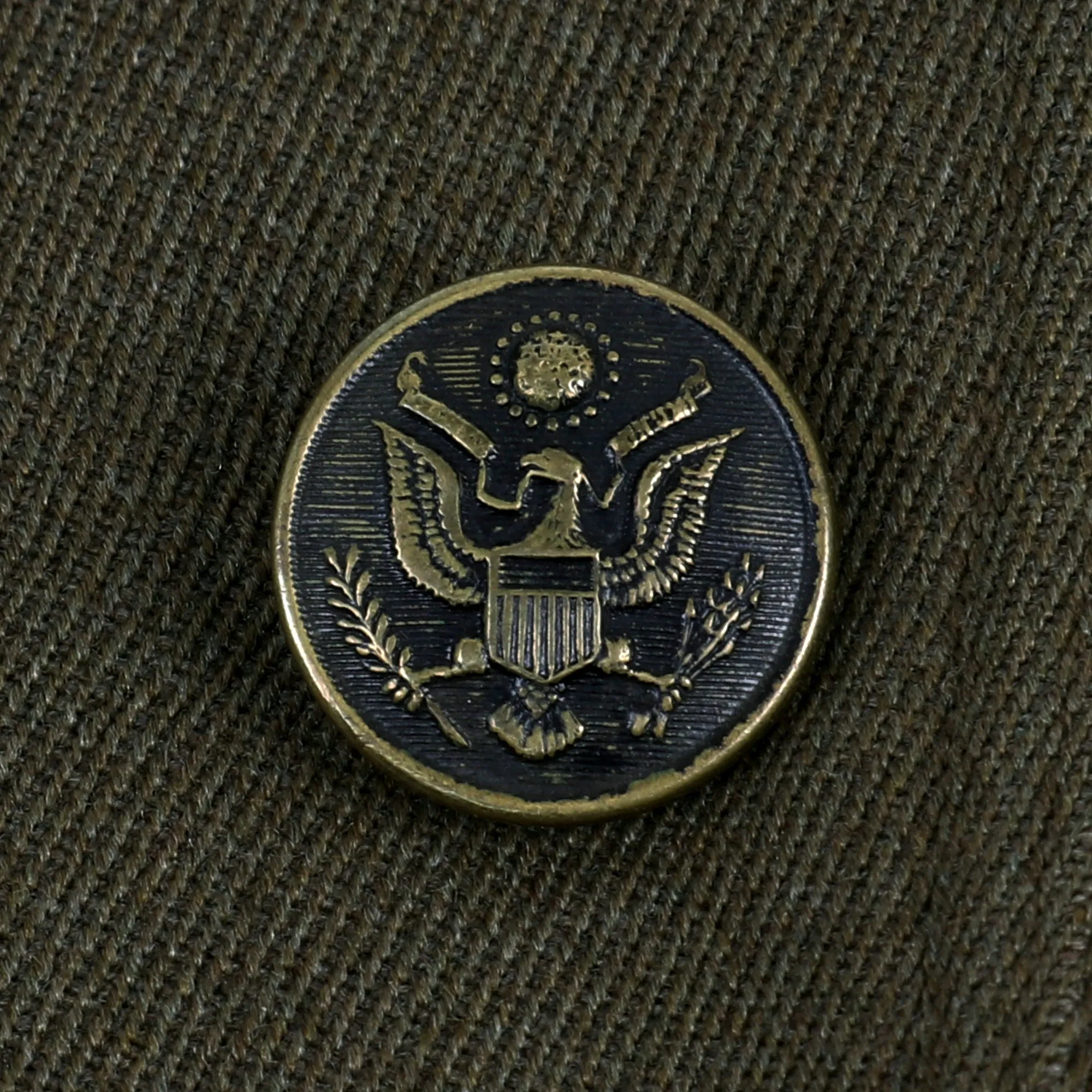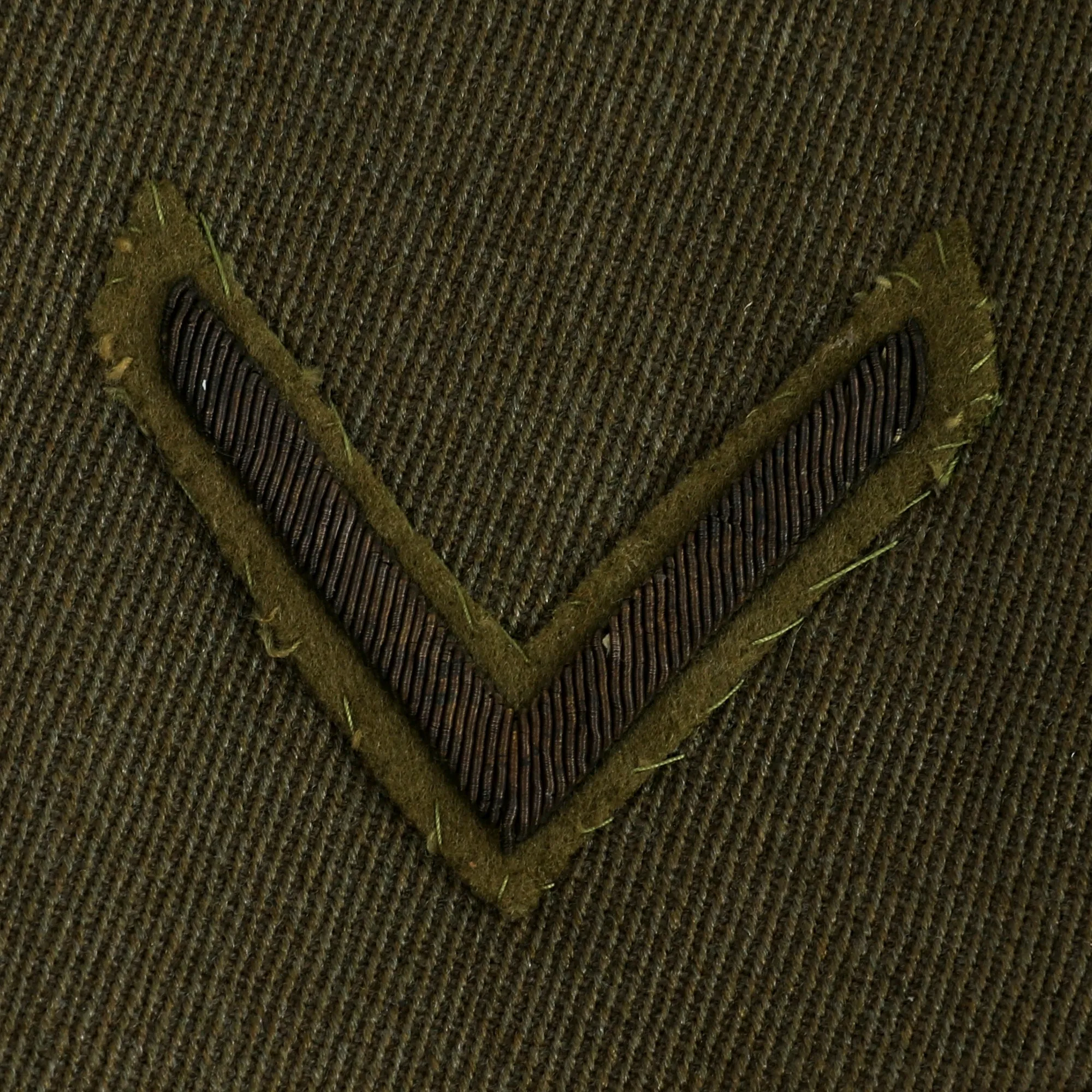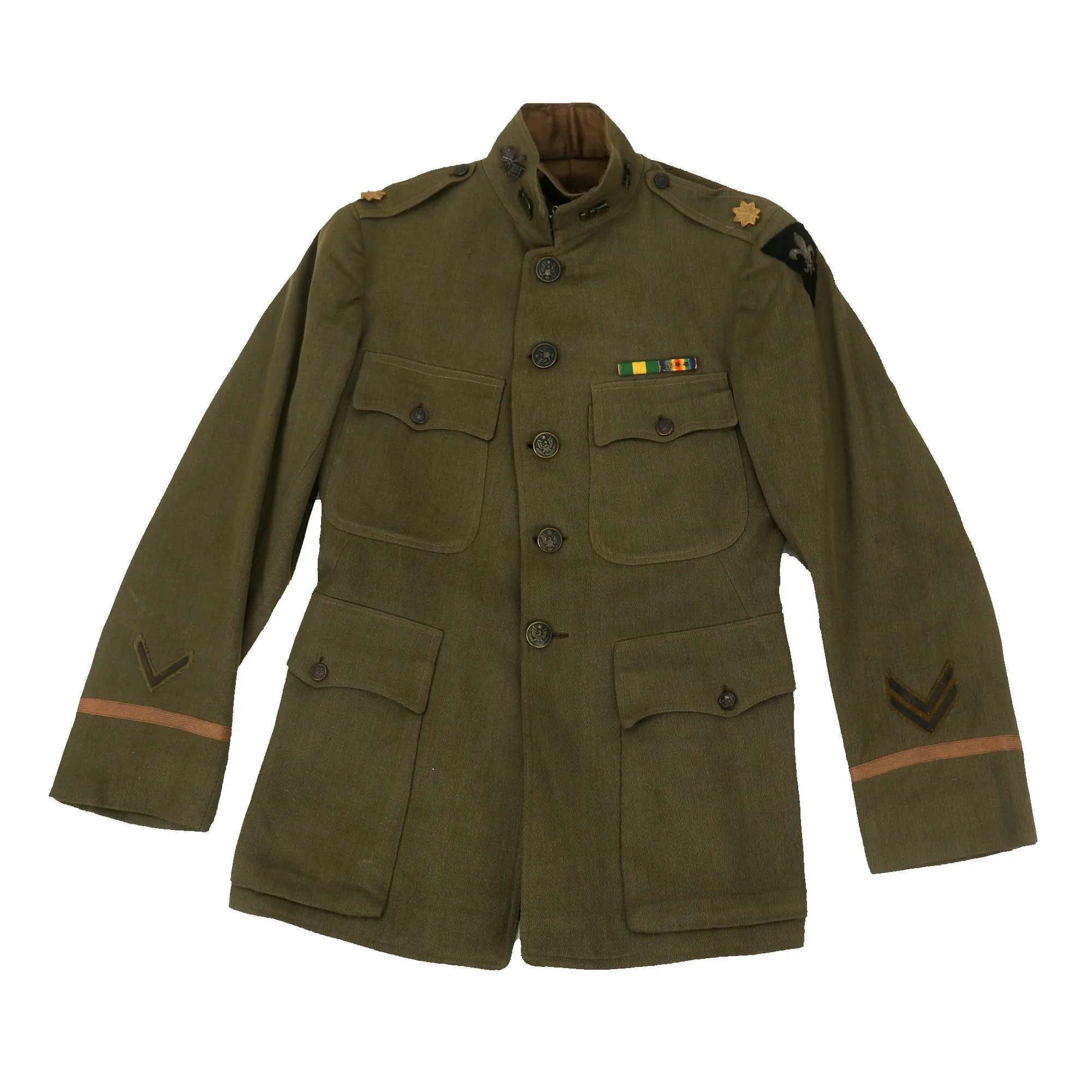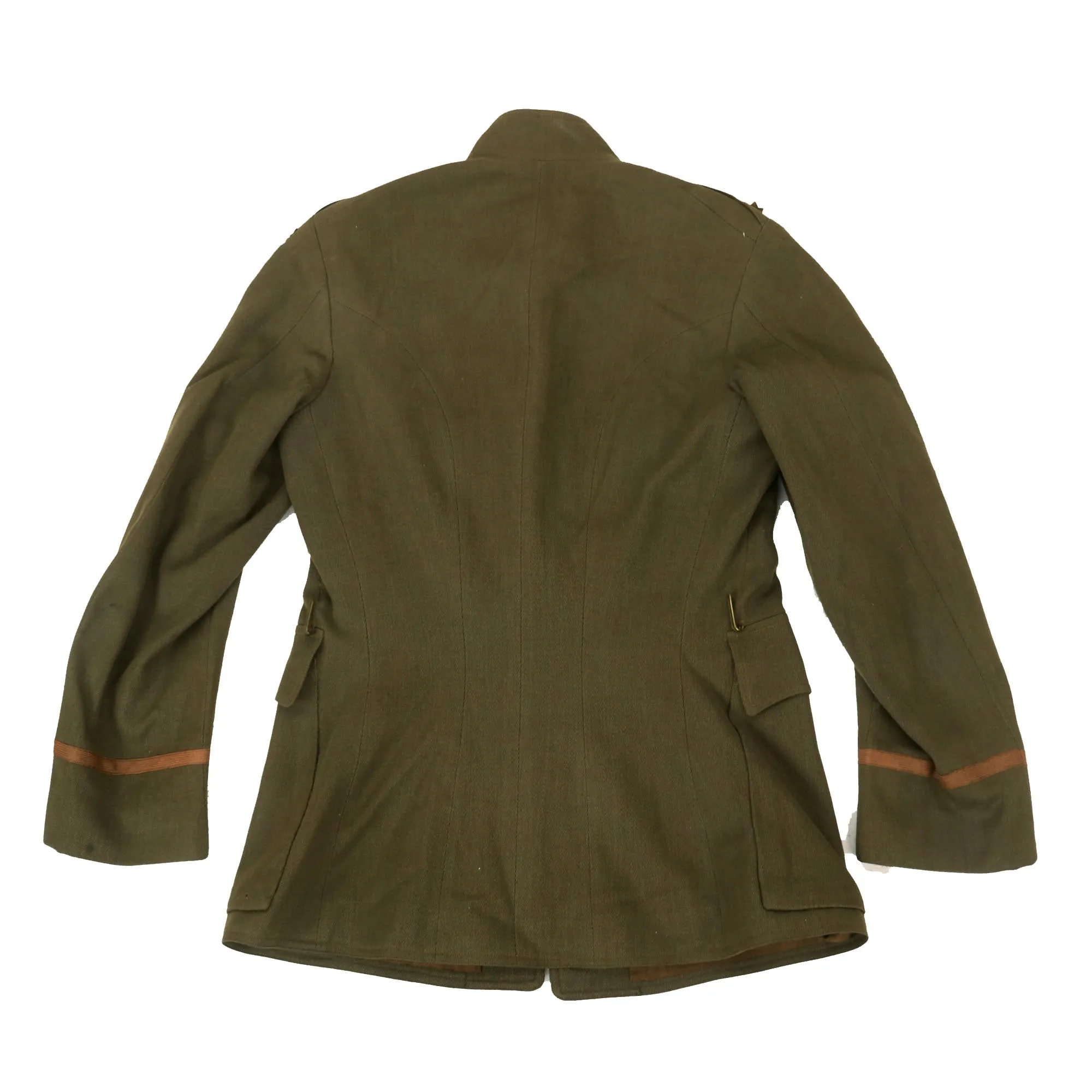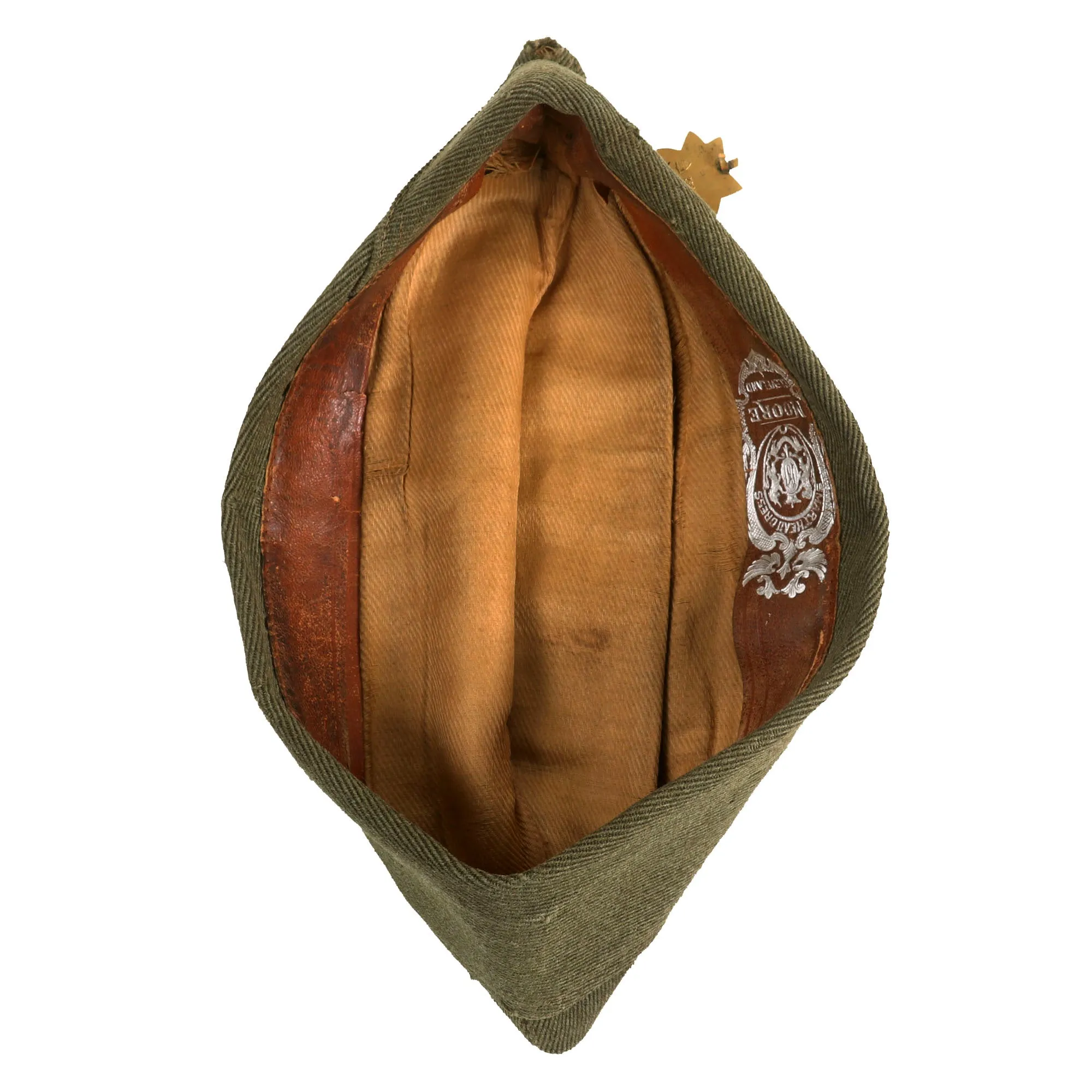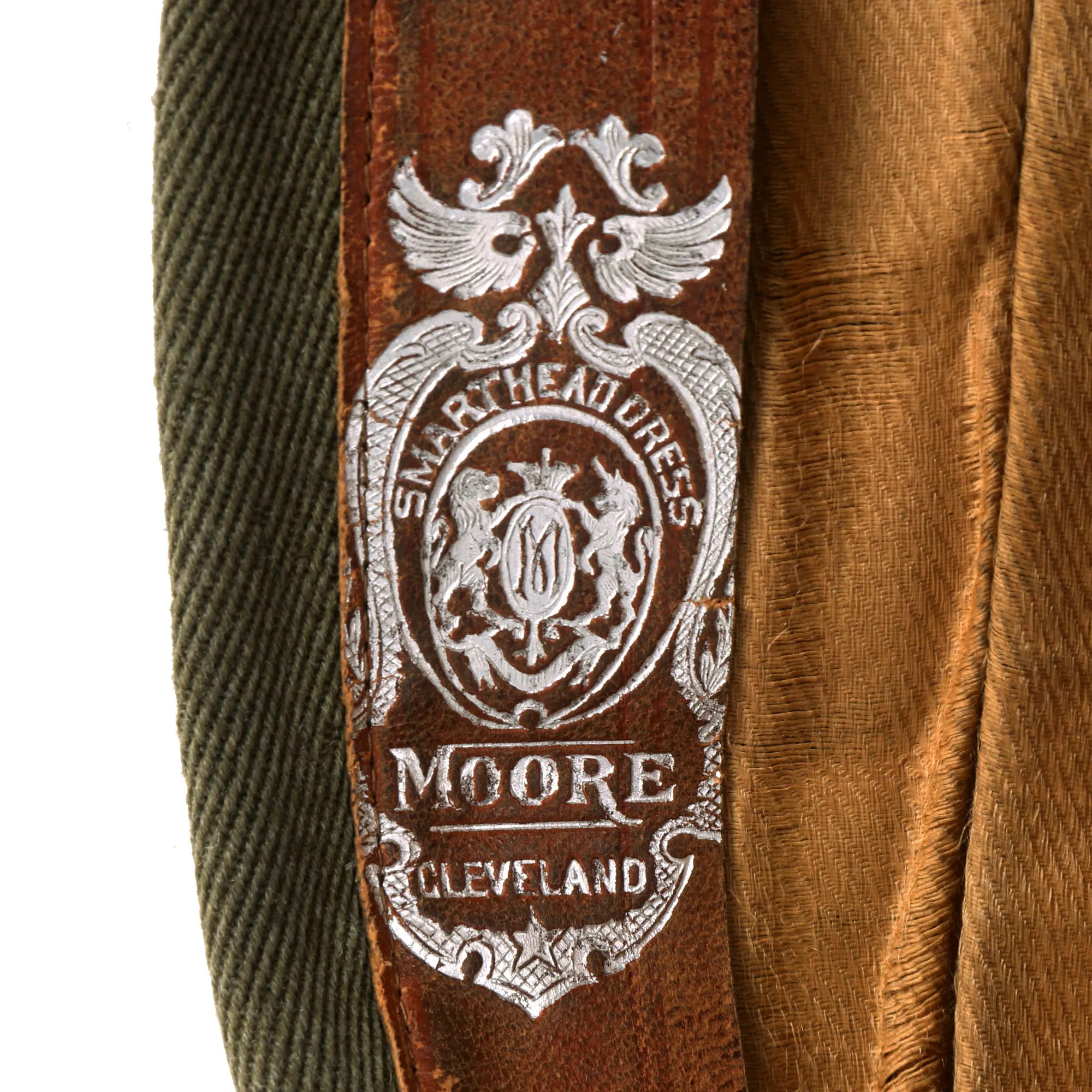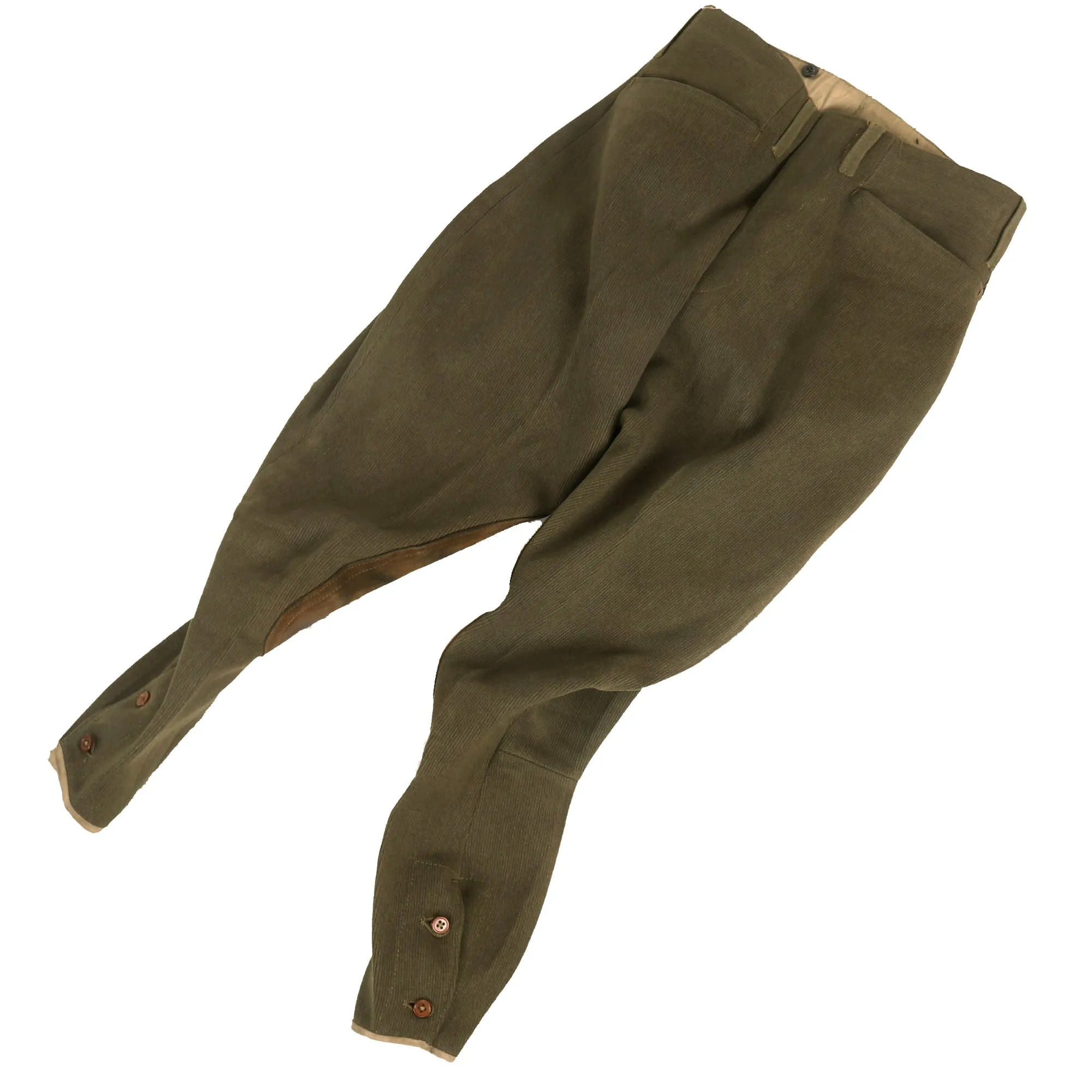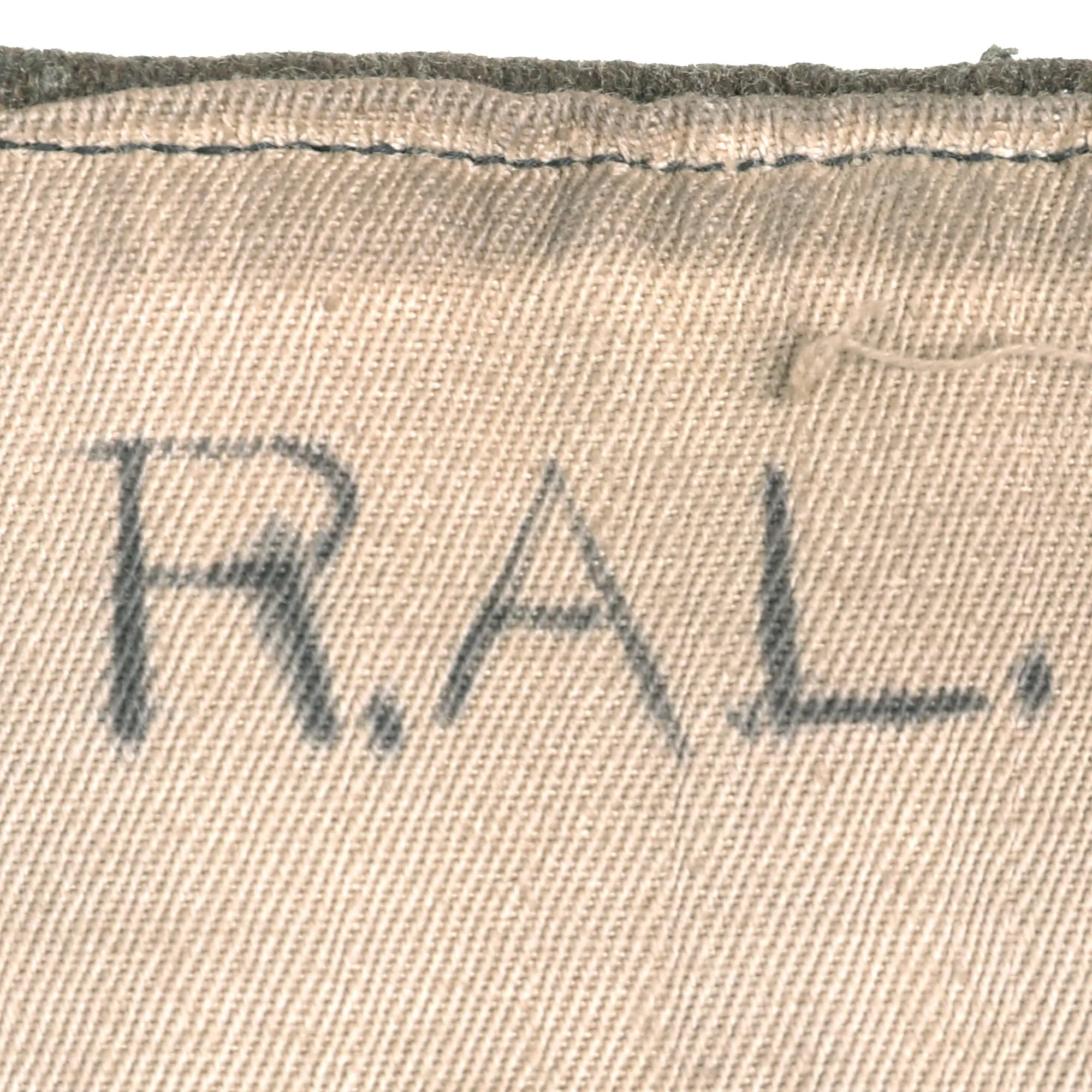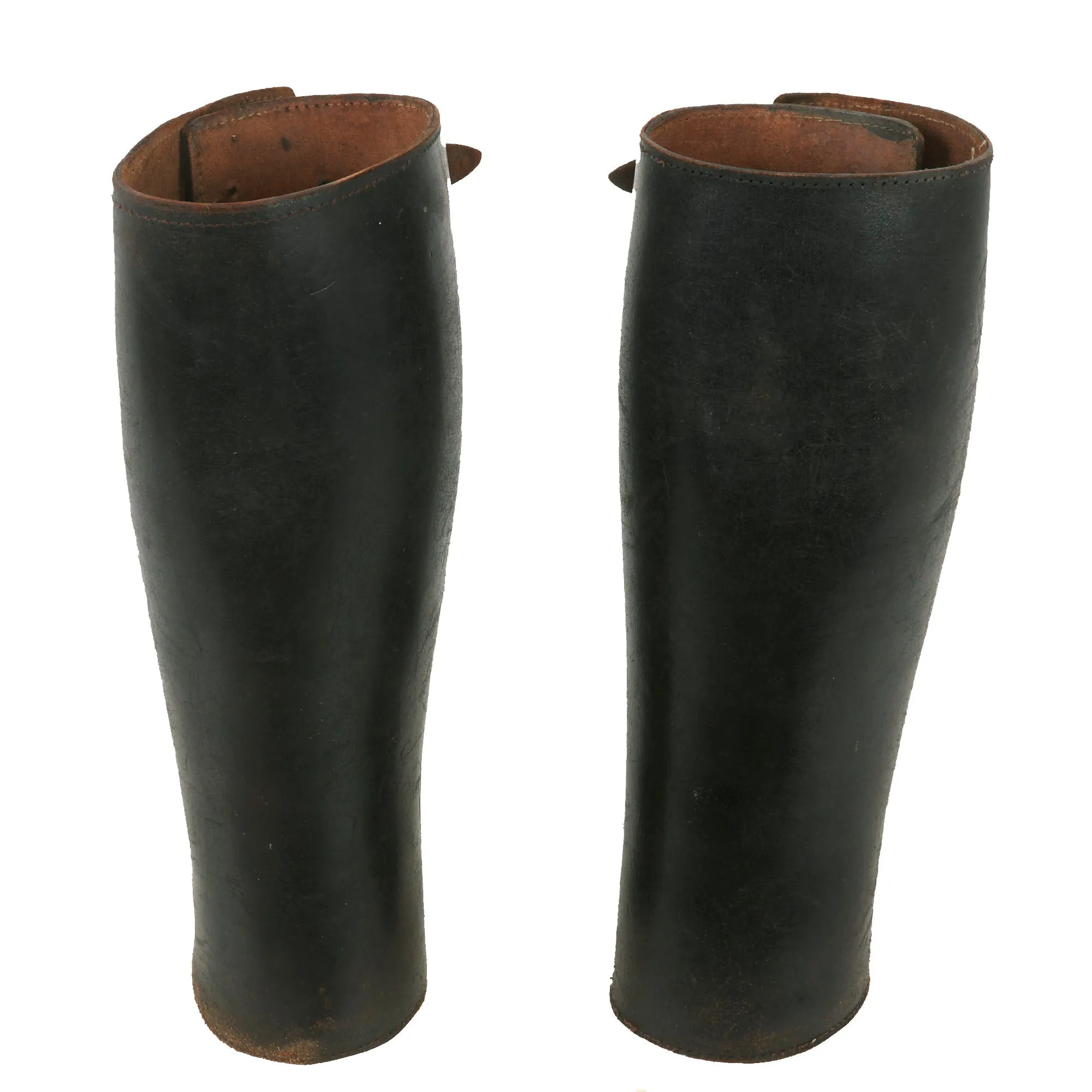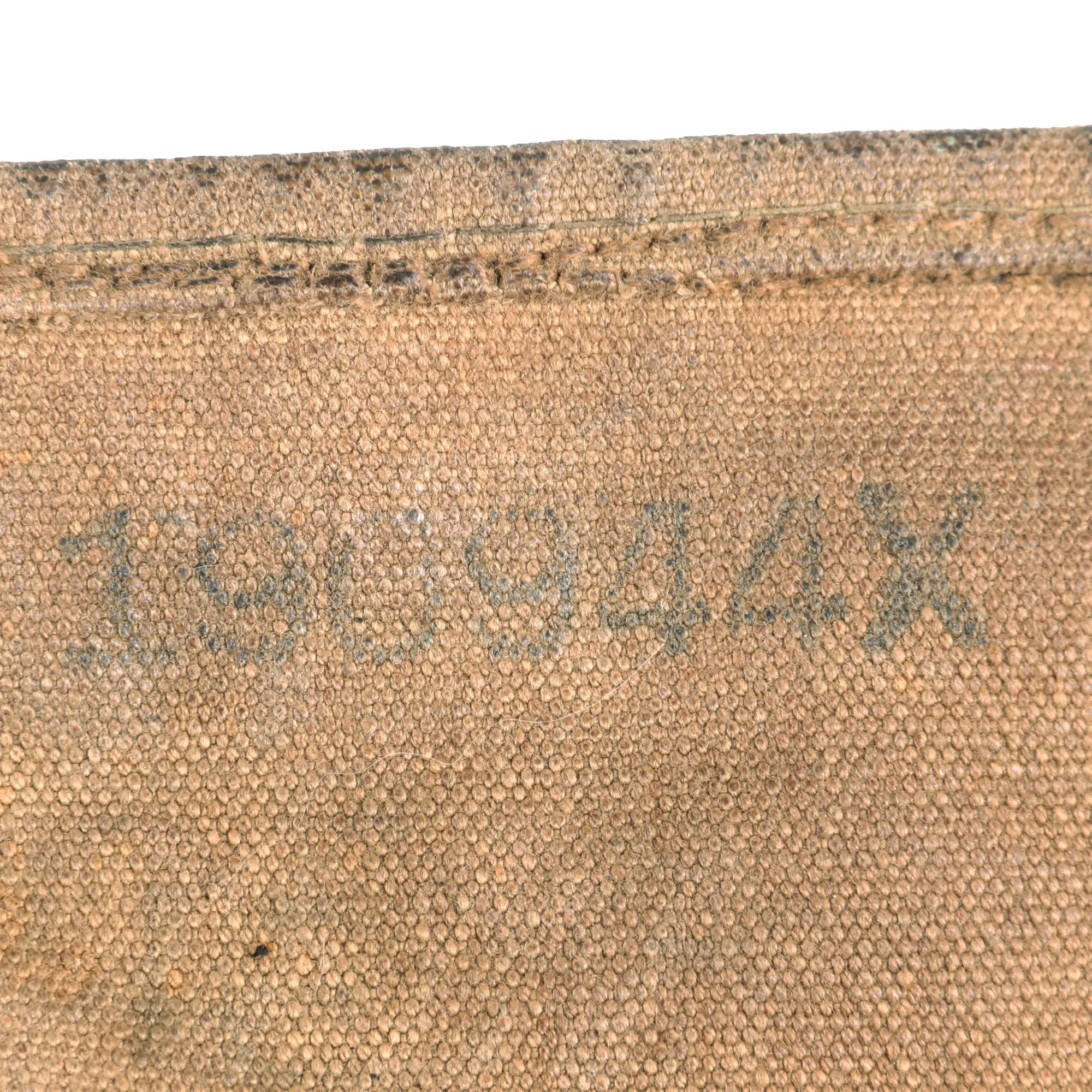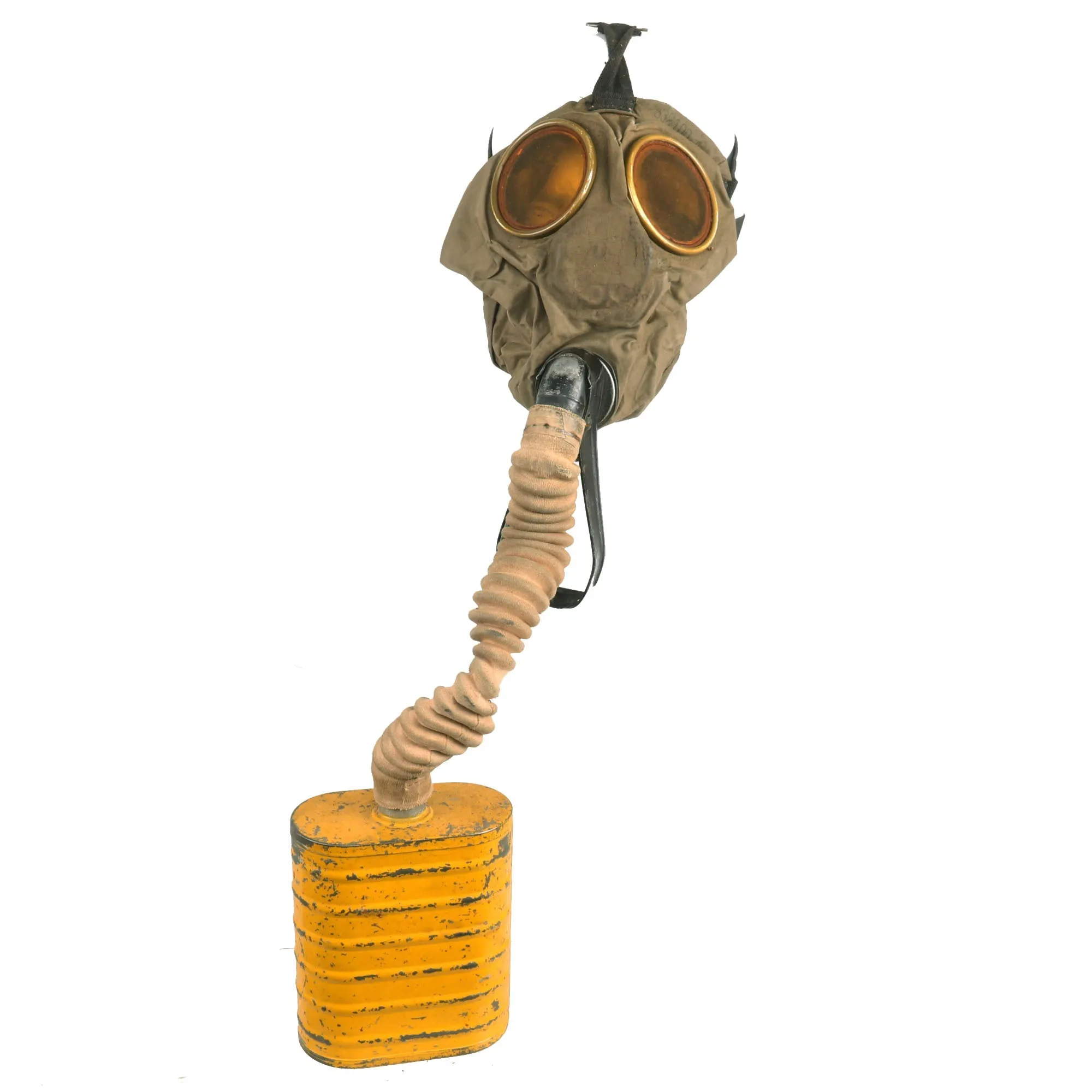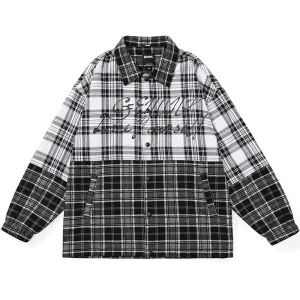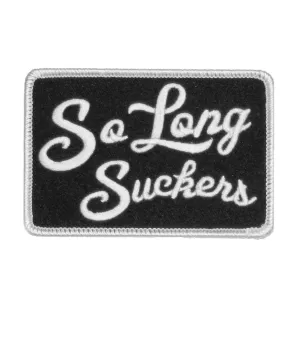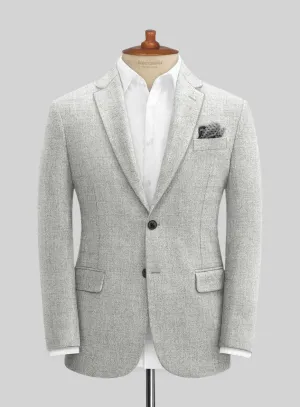Original Item: Only One Available: This is a fantastic Signal Corps Major’s uniform named to Robert Arnold Lutz, who was wounded in action and asked to return stateside in order to train the 220th Field Signal Battalion of the in-training 20th Division.
This is the Officer’s uniform grouping of Major Robert Arnold Lutz, Signal Corps, District of Paris. The grouping includes Lutz’ Parisian-made private purchase officer’s uniform jacket & breeches. The jacket was tailored at Aberdeen in Paris, and issued on April 8th, 1918. The jacket is named “Lutz” on the tag in the interior pocket, and initialed “R.A.L.” in the breeches. The jacket has a gorgeous bullion District of Paris patch and two overseas chevrons denoting 12-17 months overseas on the left shoulder, with one wound chevron on the right cuff. There are faux bullion Major rank pins on each shoulder. There are U.S. and Signal Corps officer’s insignia on the collar. Also included in the group are his overseas cap with a Major insignia pinned on, his gas mask and bag, and his leather officer’s leg gaiters. All are in great displayable condition.
Lutz was born on August 31st, 1886, in Highland Park, Illinois. He was working as an electrical engineer in Chicago, Illinois when war broke out. Due to his engineering abilities, he was commissioned as an officer in the Signal Corps Reserve and went overseas on January 13th, 1918. He saw a great deal of combat on the Western front, being wounded once. He would return to the United States early in October 1918 in order to train incoming soldiers of the signal corps. He was assigned as the adjutant of the 220th Field Signal Battalion, which was part of the 20th Division, which was training in the United States when the armistice was signed on November 11th, 1918.
Signal Corps in the World War
On 1 August 1907, an Aeronautical Division was established within the Office of the Chief Signal Officer (OCSO). In 1908, on Fort Myer, Virginia, the Wright brothers made test flights of the Army's first airplane built to Signal Corps' specifications. Reflecting the need for an official pilot rating, War Department Bulletin No. 2, released on 24 February 1911, established a "Military Aviator" rating. Army aviation remained within the Signal Corps until 1918, when it became the Army Air Service.
During World War I. Chief Signal Officer George Owen Squier worked closely with private industry to perfect radio tubes while creating a major signal laboratory at Camp Alfred Vail (Fort Monmouth). Early radiotelephones developed by the Signal Corps were introduced into the European theater in 1918. While the new American voice radios were superior to the radiotelegraph sets, telephone and telegraph remained the major technology of World War I.
A pioneer in radar, Colonel William Blair, director of the Signal Corps laboratories at Fort Monmouth, patented the first Army radar demonstrated in May 1937. Even before the United States entered World War II, mass production of two radar sets, the SCR-268 and the SCR-270, had begun. Along with the Signal Corps' tactical FM radio, also developed in the 1930s, radar was the most important communications development of World War II.
During World War I, women switchboard operators, known as the "Hello Girls", were sworn into the U.S. Army Signal Corps. Despite the fact that they wore U.S. Army uniforms and were subject to Army regulations (Chief Operator Grace Banker received the Distinguished Service Medal), they were not given honorable discharges but were considered "civilians" employed by the military, because Army regulations specified the male gender. Not until 1978—the 60th anniversary of the end of World War I—did Congress approve veteran status/honorable discharges for the remaining "Hello Girls".




